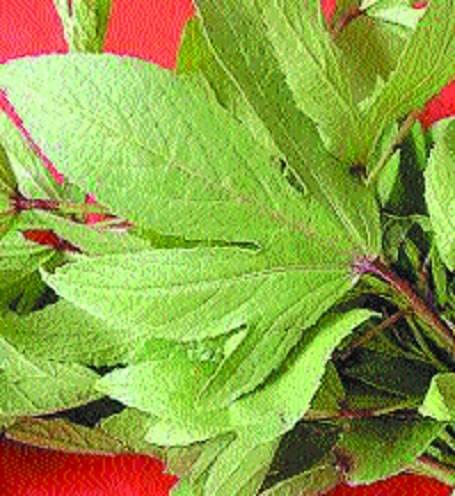Ambadi: A nature’s protection of liver and heart
| Date :24-Sep-2019 |

By Rajendra Diwe :
This vegetable has been served during Mahaprasad of Mahalaxmi or Sant Gajanan Maharaj Pragat Dinotsav. Ambadichi Bhaji and Bhakari is the most delicious dish in Vidarbha region particularly in rural areas. Entire plant is useful because of its nutritional and medicinal values. The flowers of Ambadi are used to prepare Sharbat, Jam, Jelly, Murabba while the seeds are used to prepare Besan, Chutney, Mukhwas. The tender leaves of Ambadi are used to prepare vegetable, pickle, chat masala while the dried plant of Ambadi is used to prepare paper. Botanically, there are two varieties found in India. They are Hibiscus Cannabinus (Kenaf) and Hibiscus Sabdariffa (Rosella).
In Assam, it is known as Nalita, Beng, Mestapat. In Bengal it is known as Patsan, Mestapat, Ambari while in English it is known as Bastard jute,Brown Indian hemp Ambari hemp, Deccan hemp. In Gujarat, it is known as Ambari, Sheria. In Hindi, it is called as Pitwa, Ambadi, Ambari, Patsan, Pulu. In Karnataka, it is called as Dirin Da Rani, Kasala gida, Pindi soppu, Holada pundrike, Pundi, Pinidrikegida, Ambade, Gogu. In Kerala, it is termed as Kanjaru, Kanjaru. In Manipur it is known as Sougri. In Marathi, it is known as Ambadi while in Odisha as Kanuriya. In Sanskrit it is famous as Alka, Shreyasi, Ambalika, Maryurika, Chitrapushpi, Phalamla, Keshi, Gandhapatri, Karaparni, Ambika, Vrttabija, Rajjudatri,Machika, Ambashtha and Sahasravatamulika. In Tamil Nadu, it is famous as Phalungu, Cetikkacuraikkirai, Pulimanjai, Valikai, Pulichhi,Palungu, Kaccurakkirai, Canampu, Pulimanji. In Telugu, it is called as Gongura, Gogu, Gonkura, Pundikura, Gulunguchettu, Ghongukuru, Pimdikura, Gongoora, Gaynaru. In Urdu, it is known as Mushkadanah. Ambadi has been used as traditional medicine since ancient times.
Pharmacologically it acts as anti-hypersensitive (reduce high blood pressure), cardio protective (protects heart), anti-hyper-lipidimic (lowers fat), hepatoprotective (protects liver), diuretic, anti-cancer, anti-oxidant etc. Ambadi is the best source of vitamins E and Vitamins C which fulfill the daily requirement of human body. Ambadi leaves can be used as potential sources of vitamins, minerals, phenolics with antioxidant activity and as antimicrobial agents with potential medicinal value. Ambadi leaves are mixed with green chillies, salt, and some garlic to prepare chutney which is served with traditional Jowar or Bajra roti. So also a dry vegetable is prepared from Ambadi leaves.
Another recipe has the leaves steamed with lentils and cooked with dal. Another unique dish is prepared by mixing fried leaves with spices and made into a gongura pacchadi, the most famous dish of Andhra cuisine. Best of all is the cool drink or sharbat made from flowers of Ambadi. It is prepared by boiling dried petals of the flowers infused in hot water for 8 to 10 minutes or until the water turns red. To this is added sugar and the drink is served chilled. The drink is one of the most inexpensive beverages common during summer time. It is very popular in rural areas of Maharashtra. The health benefits of Ambadi include its ability to boost eyesight, slow the aging process, reduce certain skin infections, strengthen the immune system, improve digestion, build strong bones, increase circulation, increase energy levels, help prevent cancer, lower blood pressure, increase appetite, protect against diabetes, strengthen heart health, and improve the kidney health.
